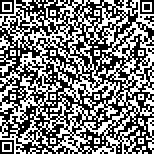王杼,余茜,李奎德,等.重复经颅磁刺激对卒中后认知障碍合并抑郁患者脑功能活动的影响[J].中华物理医学与康复杂志,2023,45(10):893-898
扫码阅读全文

|
| 重复经颅磁刺激对卒中后认知障碍合并抑郁患者脑功能活动的影响 |
|
| |
| DOI:10.3760/cma.j.issn.0254-1424.2023.10.006 |
| 中文关键词: 重复经颅磁刺激 认知障碍 抑郁 脑卒中 功能性磁共振成像 |
| 英文关键词: Transcranial magnetic stimulation Cognitive impairment Depression Stroke Functional magnetic resonance imaging |
| 基金项目:四川省科技厅重点研发项目(2022YFS0111);四川省卫健委普及应用项目(21PJ078);四川省中医药管理局中医药科研专项资助(2021MS132);四川省干部保健科研课题(川干研2021-218) |
|
| 摘要点击次数: 4004 |
| 全文下载次数: 4616 |
| 中文摘要: |
| 目的 探讨重复经颅磁刺激(rTMS)对卒中后认知障碍合并抑郁(PSCCID)患者脑功能活动的影响。 方法 将符合纳入标准且最终完成研究的30例患者按随机数字表法分为观察组和对照组,每组15例,2组患者均给予基础治疗(包括营养神经、改善循环、抗聚稳斑及控制基础疾病治疗,每例患者入组后均给予口服盐酸舍曲林片50 mg/d,疗程4周)和常规康复治疗(主要包括运动治疗、作业治疗和认知功能训练,其中运动治疗每次40 min,每日1次;作业治疗每次30 min,每日1次;认知功能训练每次30 min,每日1次。康复治疗每周5 d,共治疗4周。)。在此基础上,观察组增加rTMS治疗(10 Hz,100%静息运动阈值,刺激左侧前额叶背外侧皮质,每日1次,每周5 d,共治疗4周),对照组接受rTMS假刺激治疗(刺激时刺激线圈与刺激部位头皮切线垂直)。分别于治疗前和治疗4周结束后(治疗后),对2组患者进行临床功能评估,并采用静息态功能磁共振分析治疗前后的脑区局部一致性(ReHo)和低频振幅(ALFF)的变化。 结果 治疗后,2组患者的简易精神状态检查(MMSE)、蒙特利尔认知评估量表(MoCA)、汉密尔顿抑郁量表17项(HAMD-17)评分均较组内治疗前有明显改善(P<0.05);且观察组上述指标均明显优于对照组(P<0.05)。观察组较组内治疗前及对照组有多个ReHo和ALFF改变的脑区(P<0.05),其中升高的脑区主要位于刺激侧大脑,减弱的脑区主要位于刺激对侧。左额叶眶回ReHo升高与MMSE、MoCA和HAMD-17具有相关性(r=0.811、0.808和-0.771,P<0.05);左侧颞横回ALFF升高与MMSE和MoCA具有相关性(r=0.754和0.808,P<0.05)。 结论 rTMS改善PSCCID患者认知和抑郁可能与影响认知和情绪处理有关脑区的局部同步化和活动强度有关。 |
| 英文摘要: |
| Objective To observe any effect of transcranial magnetic stimulation on brain activity, cognitive impairment and depression (PSCCID) after a stroke. Methods Thirty patients with PSCCID after a stroke were randomly assigned into an observation or a control group, each of 15. For four weeks, both groups received basic medication to nourish the nerves, improve circulation, and anti-platelet , as well as 50mg/d of oral sertraline hydrochloride. Their rehabilitation involved 40 minutes of exercise daily, 30 minutes of assignment therapy and cognitive function training. The therapy was administered 5 days a week for the 4 weeks. In addition, the observation group received daily rTMS applied over the left dorsolateral prefrontal cortex at 10Hz and 100% of the motor threshold. Functional MRI was used before and after the treatment to assess the subjects′ cognition and depression, as well as any changes in the regional homogeneity (ReHo) and amplitude of low-frequency fluctuations (ALFFs) in regions of interest. Results Significant improvement was observed in the subjects′ average Mini-mental State Examination (MMSE), Montreal Cognitive Assessment Scale (MoCA) and Hamilton Depression Scale 17-item (HAMD-17) scores, with those of the observation group significantly better than those of the control group on average. After the intervention the observation group presented several brain regions with altered ReHo and ALFF values compared with before the treatment and compared with the control group. The increases were mainly on the stimulated side while the decreases were mainly on the contralateral side. The increased ReHo in the left orbital gyrus correlated significantly with the average MMSE, MoCA and HAMD-17 scores. The increased amplitude of fluctuations in the left Heschl′s gyrus correlated significantly with the average MMSE and MoCA scores. Conclusion rTMS can relieve depression and promote cognition after a stroke. Its effects may be associated with altered brain activity in regions related to cognitive and emotional processing. |
|
查看全文
查看/发表评论 下载PDF阅读器 |
| 关闭 |